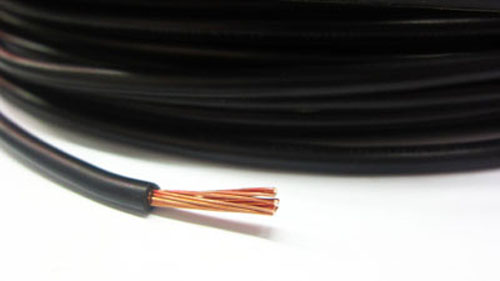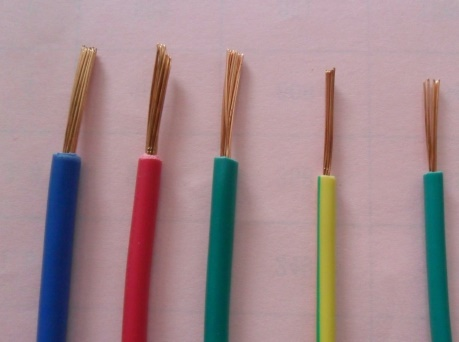It is a type of copper core PVC insulated flexible wire, which is used in situations that require flexibility in fixed wiring. BVR wire is a flexible wire specifically designed for distribution cabinets. It is also called secondary wire.
Detailed introduction:
This product is suitable for fixed installation of power devices with AC rated voltage of 450/750V and below, such as home lighting, etc. The main difference between BVR wires and BV wires lies in the fact that the R-type wire has a conductor diameter made of flexible copper wire. In other words, it increases the number of conductors while decreasing the diameter of each single conductor, with the diameter of a single conductor being less than 1 millimeter. As a result, BVR wires are very flexible, significantly reducing the requirements for installation angles compared to BV wires, making it more convenient and quicker to pull through conduits and cable trays, thereby reducing work intensity while greatly improving work efficiency.
The difference between BV and BVR:
(1)In terms of technology, BV is single-core, while BVR is multi-core. In terms of production, BVR is a bit more complex than BV.
(2)In terms of price, there is only a difference in craftsmanship between BV and BVR, with BVR being slightly more expensive than BV. The range of BVR specified by the International Electrotechnical Commission is from 2.5 mm² to 70 mm², however, according to our actual needs, it is the same as BV.
(3)In terms of performance, BV and BVR are basically the same, with BVR being slightly heavier.
Similarly, BVR wires are classified into flame-retardant wires (ZR-BVR), fire-resistant wires (NH-BVR), and low-smoke halogen-free wires (WDZ-RYJ) based on the selected materials. Users can flexibly choose based on the usage scenarios. Among them, low-smoke halogen-free wires produce very little smoke during combustion, and the gases released do not contain halogen (low halogen) elements, making them non-toxic (or low-toxic). In the event of a fire, these wires can significantly reduce harm to instruments, equipment, and the human body, which is why they are widely used in high-rise buildings, hospitals, large libraries, stadiums, disaster command and dispatch buildings, train stations, civil airports, passenger waiting rooms, key cultural heritage protection sites, as well as subways, underground malls, or densely populated public places.


This product is suitable for fixed installation of power devices with a rated AC voltage of 450/750V and below, such as home lighting. The only difference between BVR wires and BV wires is that the R-type wires have conductors made of soft copper wire. In other words, by increasing the number of conductors and reducing the diameter of each individual conductor, the diameter of a single conductor is less than 1 millimeter. As a result, BVR wires are very flexible, significantly reducing the installation angle requirements compared to BV wires, making it easier and quicker to lay in conduits and trays, lowering work intensity while greatly improving work efficiency.